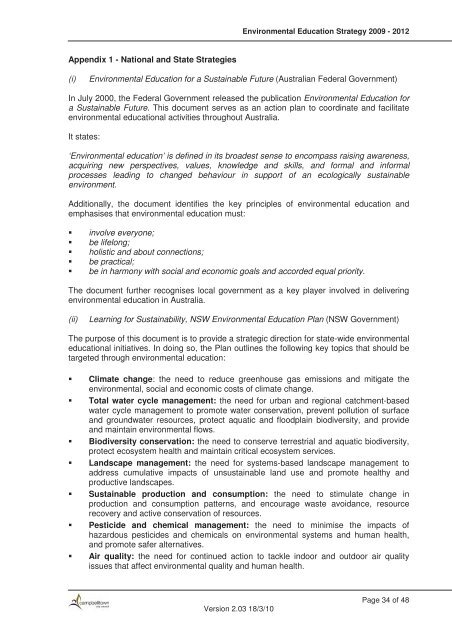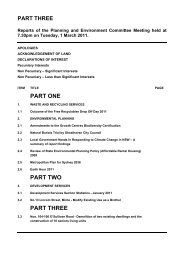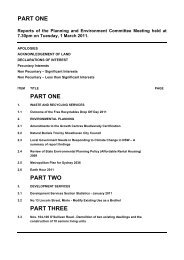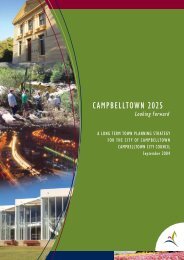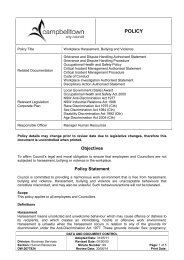Environmental Education Strategy - Campbelltown City Council ...
Environmental Education Strategy - Campbelltown City Council ...
Environmental Education Strategy - Campbelltown City Council ...
- No tags were found...
Create successful ePaper yourself
Turn your PDF publications into a flip-book with our unique Google optimized e-Paper software.
<strong>Environmental</strong> <strong>Education</strong> <strong>Strategy</strong> 2009 - 2012Appendix 1 - National and State Strategies(i)<strong>Environmental</strong> <strong>Education</strong> for a Sustainable Future (Australian Federal Government)In July 2000, the Federal Government released the publication <strong>Environmental</strong> <strong>Education</strong> fora Sustainable Future. This document serves as an action plan to coordinate and facilitateenvironmental educational activities throughout Australia.It states:‘<strong>Environmental</strong> education’ is defined in its broadest sense to encompass raising awareness,acquiring new perspectives, values, knowledge and skills, and formal and informalprocesses leading to changed behaviour in support of an ecologically sustainableenvironment.Additionally, the document identifies the key principles of environmental education andemphasises that environmental education must:involve everyone;be lifelong;holistic and about connections;be practical;be in harmony with social and economic goals and accorded equal priority.The document further recognises local government as a key player involved in deliveringenvironmental education in Australia.(ii)Learning for Sustainability, NSW <strong>Environmental</strong> <strong>Education</strong> Plan (NSW Government)The purpose of this document is to provide a strategic direction for state-wide environmentaleducational initiatives. In doing so, the Plan outlines the following key topics that should betargeted through environmental education:Climate change: the need to reduce greenhouse gas emissions and mitigate theenvironmental, social and economic costs of climate change.Total water cycle management: the need for urban and regional catchment-basedwater cycle management to promote water conservation, prevent pollution of surfaceand groundwater resources, protect aquatic and floodplain biodiversity, and provideand maintain environmental flows.Biodiversity conservation: the need to conserve terrestrial and aquatic biodiversity,protect ecosystem health and maintain critical ecosystem services.Landscape management: the need for systems-based landscape management toaddress cumulative impacts of unsustainable land use and promote healthy andproductive landscapes.Sustainable production and consumption: the need to stimulate change inproduction and consumption patterns, and encourage waste avoidance, resourcerecovery and active conservation of resources.Pesticide and chemical management: the need to minimise the impacts ofhazardous pesticides and chemicals on environmental systems and human health,and promote safer alternatives.Air quality: the need for continued action to tackle indoor and outdoor air qualityissues that affect environmental quality and human health.Version 2.03 18/3/10Page 34 of 48


